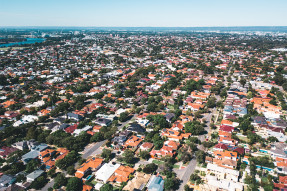Mortgage rates dropped slightly this week, with the 30-year fixed mortgage rate falling to 3.89% from 3.92% the previous week. However, due to expectations of even higher inflation, mortgage rates will continue their upward trek.
While the primary markets make up a larger share of metros within the top five for retail leasing since Q2 2020, it was actually a metro in the secondary markets that led all.
Rapidly rising inflation and expectations that the Fed will raise short-term interest rates as soon as next month are pushing up mortgage rates.
On the back of an historic holiday shopping season and historic retail sales across all of 2021, U.S. advanced estimates of retail and food service sales for January 2022 rebounded from the -2.5% slide in December 2021.
A strong recovery in 2021 in the U.S. commercial real estate market attracted foreign investors who purchased an estimated $57.7 billion in U.S. commercial real estate in 2021, up 49% from 2020.
Nationally, the existing single-family median home price rose 14.6% year-over-year to $361,700, with 67% of the markets showing double-digit home price appreciation.
At the national level, housing affordability fell in December 2021 compared to the previous month according to NAR’s Housing Affordability Index. Compared to the prior month, the monthly mortgage payment increased by 0.5% while the median family income rose modestly by 0.3%.
Apartment demand is still outpacing supply across all classes of apartments and with demand likely to rise, rental prices are also likely to rise.
When looking at the household composition of home buyers today, 60% of all home buyers are married couples, 19% are single women, and 9% are unmarried couples.
The 30-year fixed mortgage rate surged to 3.69% from 3.55% the previous week. How will higher mortgage rates affect homebuyers?
Search Economists' Outlook





























